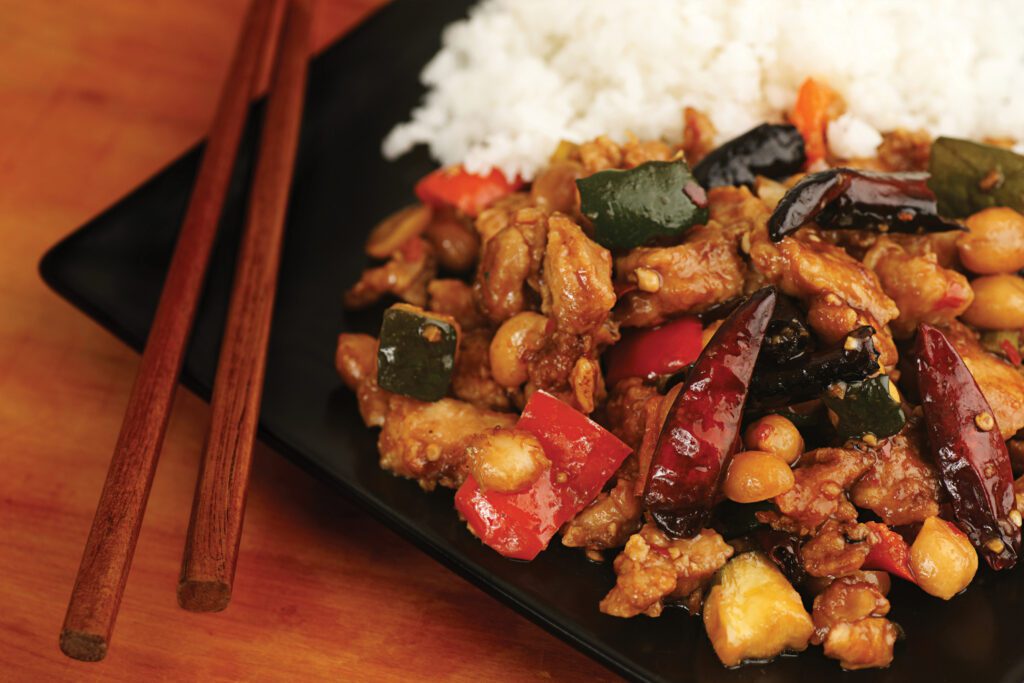Eating Healthier When Eating Out
Dining out is a favorite American pastime, but as with most restaurant meals, portions can be large and caloric, and it’s wise to either split a dish with a dining partner or ask for a lunch portion. When dining in restaurants you’re often faced with appetizers and/or bread and chips that can up the calorie content of the meal. Don’t hesitate to request no refills on items brought to the table or ask that they are skipped altogether. Once you’ve done that, how do you pick a healthy meal from the menu? Here are four popular restaurant comparisons, and which you should choose to stay on the healthy side.
Kung Pao Chicken vs. General Tso's Chicken
These two Chinese chicken favorites might sound similar by name, but they differ in nutrition. General Tso’s chicken is battered, deep fried, and tossed with a spicy sauce. Kung Pao chicken, on the other hand, is not deep fried and instead is wok seared and tossed with a marinade. The choice here depends on the restaurant, but in most cases Kung Pao chicken is the winner. It packs in extra veggies and is topped with peanuts, a source of heart-healthy monounsaturated fats. Plus, the chicken isn’t fried, which is always a plus.


Pad Thai vs. Chicken Satay
Overflowing with vegetables and spices, Thai options are seriously delicious (and sometimes seriously spicy!). It helps to understand what preparation methods are used and which ingredients are traditional to the dish. Pad Thai is a standard option on Thai restaurant menus, but it’s surprisingly not the best option. Due to the sweet sauce covering the noodles, the traditional Pad Thai dish can be loaded with calories and sodium. Instead, consider chicken satay. This dish is seasoned with traditional flavors, skewered, and grilled, making it a lower fat and calorie option.
Chimichangas vs. Mexican Fajitas
Between the margaritas and endless refills of chips and salsa, you may think that eating a healthy meal at a Mexican restaurant is nearly impossible. However, a traditional dish found on most Mexican restaurant menus is the answer to this challenge. Mexican fajitas are a great option if you’re looking for healthier fare. They aren’t covered in fat-laden cheese sauce like chimichangas are, and they come with nutrient-rich, flavorful toppings like bell peppers, lettuce, and pico de gallo. Plus, fajitas are build-your-own, so it’s easy to control portions. However, the overall portion is likely enough for two meals, so consider sharing with a friend or packing half to take home.
Chicken Tandoori vs. Chicken Tikka Masala
Indian dishes are packed with flavor from traditional spices such as turmeric and cumin. However, it’s easy to go overboard on calories, fat, and sodium when dining in a traditional Indian restaurant if you’re not familiar with the cooking methods and ingredients used. Consider chicken tandoori versus chicken tikka masala. The two are significantly different when it comes to nutrition. Tandoori refers to how the meat is cooked. A tandoor, or clay oven, is used to roast the chicken with yogurt and spices. This results in a lower-fat option that is still packed with flavor. Chicken tikka masala is prepared in a similar fashion, but is then mixed with a sauce typically consisting of coconut cream, butter, and/or dairy cream and spices. This combination ups the saturated fat making the tandoori a far better option. Great news for vegetarians: Tandoori isn’t just for meat. Delicious tandoori vegetables are always a great choice.
Allison Knott MS, RD, LDM
Registered Dietitian, Nutrition Communication and Wellness Consultant

